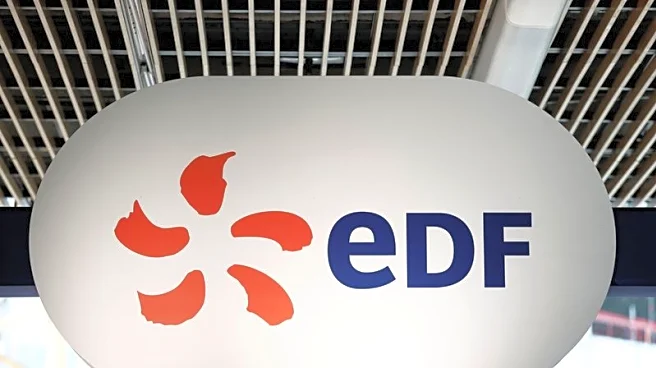What's Happening?
G Mining Ventures has received a significant tax incentive for its Tocantinzinho Gold Mine in Brazil, reducing the corporate tax rate from 34% to approximately 15% for ten years. This development comes as the company's stock shows modest gains, with a 1-year total shareholder return of 2.2%. The stock is currently trading at a price-to-earnings (P/E) ratio of 33.1x, which is higher than the Canadian Metals and Mining industry average of 24x and the peer group average of 25.7x. This premium valuation suggests that investors are optimistic about the company's future profitability and growth initiatives. However, the current market price raises questions about whether the stock is overvalued, as it exceeds the estimated fair P/E ratio of 31.7x.
Why It's Important?
The tax incentive is a strategic advantage for G Mining Ventures, potentially enhancing its profitability and attractiveness to investors. The high P/E ratio indicates strong investor confidence in the company's growth prospects, but it also poses a risk if the company fails to meet these expectations. The discrepancy between the P/E ratio and the discounted cash flow (DCF) model, which suggests the stock is undervalued, highlights the complexity of accurately assessing the company's market value. This situation underscores the importance of careful analysis for investors, as market volatility or operational setbacks could impact the stock's valuation.
What's Next?
Investors and analysts will likely monitor G Mining Ventures' operational performance and market conditions closely to assess whether the current valuation is sustainable. The company's ability to capitalize on the tax incentive and achieve projected growth will be critical in maintaining investor confidence. Additionally, broader market trends and regulatory changes could influence the company's future valuation and investor sentiment.
Beyond the Headlines
The tax incentive not only impacts G Mining Ventures' financial outlook but also reflects broader regulatory trends in Brazil aimed at attracting foreign investment in the mining sector. This could set a precedent for other companies seeking similar incentives, potentially reshaping the competitive landscape in the region. The situation also raises ethical considerations about the role of tax incentives in corporate strategy and their impact on local economies.











